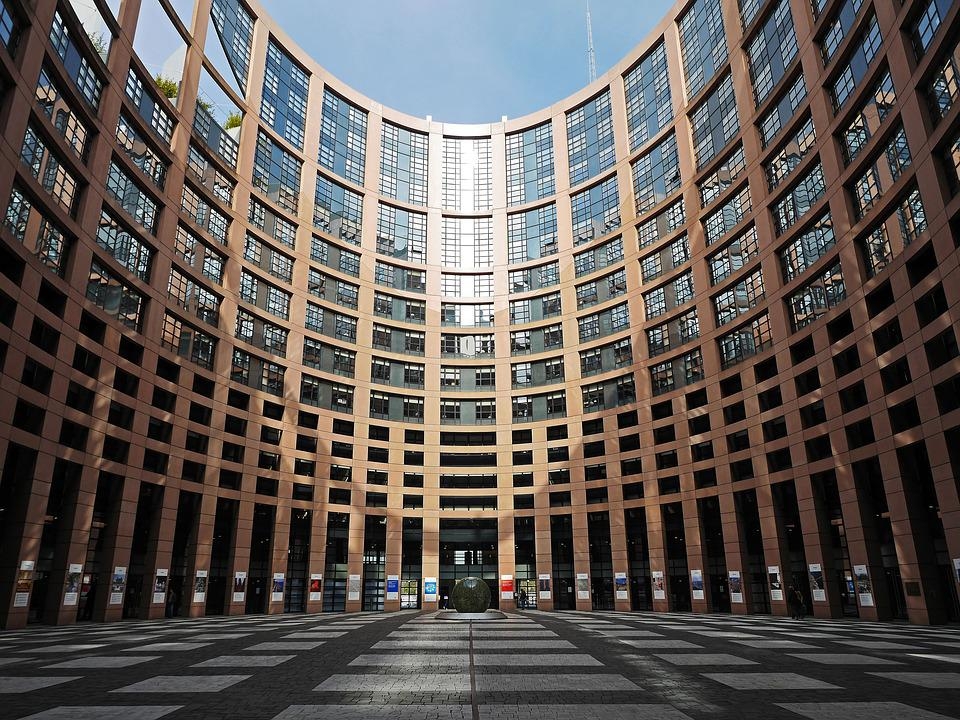Leaders of the European Union have been at odds over their new round of sanctions that would look to ban imports of Russian oil into the region as punishment to Moscow for its invasion of Ukraine. The bloc came to an agreement this week, banning most Russian oil imports in the region by the end of the year.
In a report by Reuters, the leaders of the European Union agreed in principle to cut off 90 percent of Russian oil imports by the end of the year. The decision resolves the bloc’s deadlock with Hungary over what is believed to be the strictest sanction on Russia since its invasion of Ukraine in February.
Diplomats said that the agreement would open the door for other aspects of the sixth round of EU sanctions on Russia to come into effect, including cutting off Russia’s largest bank, Sberbank, from the SWIFT messaging platform.
“Agreement to ban export of Russian oil the EU,” tweeted European Council President Charles Michel during the first of the two-day summit of the 27 leaders that make up the EU. “This immediately covers more than ⅔ of oil imports from Russia, cutting a huge source of financing for its war machine. Maximum pressure on Russia to end the war.”
Prior to the decision by the EU, Ukrainian President Volodymyr Zelenskyy criticized the EU leaders for being too soft on Russia when the embargo remained uncertain.
Zelenskyy questioned why the bloc was dependent on Russia when the opposite should be the case, noting that Russia continues to earn one billion Euros a day by selling its energy products.
With its failure to capture Ukraine’s capital Kyiv and its surrounding cities, Russian forces are reportedly advancing through the center of the Donbas region, according to Reuters. This comes as Moscow seeks to take control over Ukraine’s southern and eastern territories.
The regional governor said Russian forces are advancing towards Severdonetsk. Luhansk governor Serhiy Gaidai said that around 15,000 civilians remain in Severodonetsk as most of the region’s population of 120,000 already fled the area that was under bombardment by Russians.



 ‘She’s the Future!’ Arnold Schwarzenegger Shocks Hollywood with Endorsement of Kamala Harris for President—‘The Leadership America Needs!’
‘She’s the Future!’ Arnold Schwarzenegger Shocks Hollywood with Endorsement of Kamala Harris for President—‘The Leadership America Needs!’  ‘America Needs Trump!’ Astronaut Buzz Aldrin Endorses Donald Trump for President—‘He’s the Leader We Deserve!’
‘America Needs Trump!’ Astronaut Buzz Aldrin Endorses Donald Trump for President—‘He’s the Leader We Deserve!’  ‘Garbage or Nazis?’ Gov. Tim Walz Defends Biden’s Remarks on Trump Supporters—‘He Was Very Clear!’ Critics Demand Apology
‘Garbage or Nazis?’ Gov. Tim Walz Defends Biden’s Remarks on Trump Supporters—‘He Was Very Clear!’ Critics Demand Apology  ‘We’ll Make It Last!’ Trump Vows to Bring ‘Real Peace’ to Middle East—‘No More Endless Cycles!’ Sparks Global Debate
‘We’ll Make It Last!’ Trump Vows to Bring ‘Real Peace’ to Middle East—‘No More Endless Cycles!’ Sparks Global Debate  ‘Rolling with the People!’ Trump Rides Garbage Truck in Fiery Response to Biden’s ‘Garbage’ Remark—‘MAGA Won’t Be Trashed!’
‘Rolling with the People!’ Trump Rides Garbage Truck in Fiery Response to Biden’s ‘Garbage’ Remark—‘MAGA Won’t Be Trashed!’  ‘America’s Going to Love It!’ Elon Musk Teases ‘Fun’ Second Trump Presidency—‘It’s Gonna Be Awesome!’ Sparks Mixed Reactions
‘America’s Going to Love It!’ Elon Musk Teases ‘Fun’ Second Trump Presidency—‘It’s Gonna Be Awesome!’ Sparks Mixed Reactions  ‘Forced to Run Against My Own Will!’ – Supreme Court Blocks RFK Jr.'s Plea, Keeps His Name on Key Ballots
‘Forced to Run Against My Own Will!’ – Supreme Court Blocks RFK Jr.'s Plea, Keeps His Name on Key Ballots  ‘A System Flaw Exposed!’ Non-Citizen Voting Incident at University of Michigan Sparks Outrage—‘Ballot Will Still Count!’
‘A System Flaw Exposed!’ Non-Citizen Voting Incident at University of Michigan Sparks Outrage—‘Ballot Will Still Count!’  ‘Bring Back Trump!’ Majority of Americans Say U.S. Was ‘Better Off’ Under Trump—‘The Numbers Don’t Lie!’ Poll Shocks Critics
‘Bring Back Trump!’ Majority of Americans Say U.S. Was ‘Better Off’ Under Trump—‘The Numbers Don’t Lie!’ Poll Shocks Critics  Donald Trump Vows ‘To Take Cartel Money’ for Crime Victim Fund: ‘We Will Seize Every Dollar!’
Donald Trump Vows ‘To Take Cartel Money’ for Crime Victim Fund: ‘We Will Seize Every Dollar!’  Donald Trump’s Last Crypto Call Rallies Bitcoin Supporters in High-Stakes Election Push
Donald Trump’s Last Crypto Call Rallies Bitcoin Supporters in High-Stakes Election Push  ‘Justice for Voters!’ RNC Celebrates Court Victory in Bucks County Case—‘No More Silencing Voices!’ Declares Chairman
‘Justice for Voters!’ RNC Celebrates Court Victory in Bucks County Case—‘No More Silencing Voices!’ Declares Chairman  ‘Four Hours of Raw Talk!’ JD Vance and Joe Rogan Go Deep on Politics, Culture, and Controversy—‘No Topic Was Off-Limits!’
‘Four Hours of Raw Talk!’ JD Vance and Joe Rogan Go Deep on Politics, Culture, and Controversy—‘No Topic Was Off-Limits!’  ‘Even Bill Admits It!’ Clinton Shocks Supporters, Says Trump’s Economy Was ‘Better’—‘An Interesting Take!’ Sparks Debate
‘Even Bill Admits It!’ Clinton Shocks Supporters, Says Trump’s Economy Was ‘Better’—‘An Interesting Take!’ Sparks Debate  ‘Stop the Cheating!’ Trump Demands Immediate Action in Pennsylvania—‘Law Enforcement Must Step In Now!’
‘Stop the Cheating!’ Trump Demands Immediate Action in Pennsylvania—‘Law Enforcement Must Step In Now!’  ‘A Blow to Voter Rights!’ Supreme Court Greenlights Virginia’s Plan to Purge Suspected Non-Citizens—‘1,600 Voices Silenced!’ Sparks Debate
‘A Blow to Voter Rights!’ Supreme Court Greenlights Virginia’s Plan to Purge Suspected Non-Citizens—‘1,600 Voices Silenced!’ Sparks Debate  ‘Honey Pot Scandal Rocks 2016 Campaign!’ – Whistleblower Reveals FBI Spies Embedded With Trump Staff
‘Honey Pot Scandal Rocks 2016 Campaign!’ – Whistleblower Reveals FBI Spies Embedded With Trump Staff 































